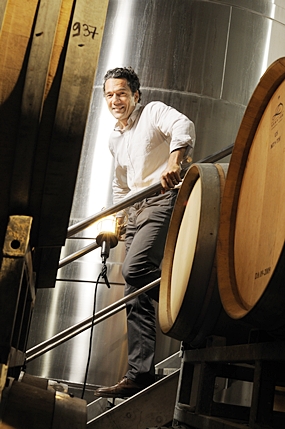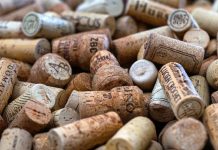Rosé wines have come a long way from being the simple gluggers of the seventies, when Hugh Johnson wrote, “Buy the cheapest rosé you can find, for there is not much to choose between them.” Today that is no longer true. Rosé wines have become amazingly popular largely because they have become so much more interesting.
Rosé is usually made from red wine grapes. You probably know that wine gets its color from the grape skins, so no contact at all will give the winemaker a white wine. A very short period of contact, anything between a couple of hours to a few days, will give a winemaker rosé. The wine’s growing popularity is also because rosés are usually very aromatic, with reminders of fresh cut flowers and ripe red fruits like strawberry and cherry. They are easy drinkers too; crisp and clean and they go with virtually everything.
Rosé wines are not always pink. They can be a range of colours depending on the grape used and how long the skins were in contact with the juice.
Claude Val Rosé 2010, France (Villa Bt. 395)
Now, here’s a real winner. It has a lovely transparent appearance and is a pretty cherry-pink with flecks of orange and hints of onion-skin. This wine had only a few hours’ contact with the grape skins and it looks very tempting. It smells very tempting too, for there’s a lovely soft and delicate aroma of strawberries, red berries and fresh herbs and flowers. There’s even a hint of quince in there too and a suggestion of cherries. It comes from the award-winning company Les Domaines Paul Mas, a group of family estates spread over the Languedoc region in the south of France.
 Winemaker Jean Claude Mas (photo © E. Perrin)
Winemaker Jean Claude Mas (photo © E. Perrin)
After the delicate aroma, the fulsome fruity taste comes as a delightful surprise. The wine is as dry as they come, but the red fruit is very much up-front giving a hint of sweetness. With an alcohol content of about 13%, it’s a light-bodied and lively wine and the kaleidoscope of tastes reflects the qualities of the grapes in the blend. It’s a blend of Grenache, Cinsault and Syrah. There’s a lovely long, dry, fruity finish which is usually the sign of a well-crafted wine. This one is a real beauty and typical of the new style of rosé wines. This delightful easy-drinker is just the thing to accompany a summer snack, or any light meal for that matter. But no one will complain if like me, you drink it on its own.
Village Cellar Ma Cherie Syrah Rosé 2011, Thailand (Paragon and Emporium Bt. 490 for 500 ml bottle)
Here’s a lovely vibrant pink wine from nearer home. It has pronounced orange hues and an aroma of strawberries with reminders of minerals and boiled sweets. It’s a clean, fresh grassy kind of smell and there may be a tiny hint of citrus lingering in the background. This freshness comes through on the taste too, which is fruit-forward in a rather French sort of way; it’s as dry as a bone and has a pleasing dash of acidity. There’s quite a long dry finish too.
The wine is made by Jacques Bocou, who has his own chateau in Southern France. He really seems to bring a French quality to his wines despite the fact that the Syrah grapes (or Shiraz if you prefer) are grown in Thailand. French, I suppose, in the sense that his wines are rather refined and rely on subtle aromas and tastes, rather than the commercial “in-yer-face” style of some New World wineries. You don’t need to trek to Bangkok either. You can get it delivered by phoning the Village Cellar office on either 04422 8407 or 08 1877 3711.
So here’s a pleasing zesty and easy-drinking rosé: firm, light-bodied and quite sharp, with 12% alcohol content. It would make a delightful apéritif to enjoy before dinner. But better still; enjoy it on its own with a few friends, if you still have any. If you haven’t, you can always rent a couple of my dogs for the evening. Very reasonable rates, of course.




